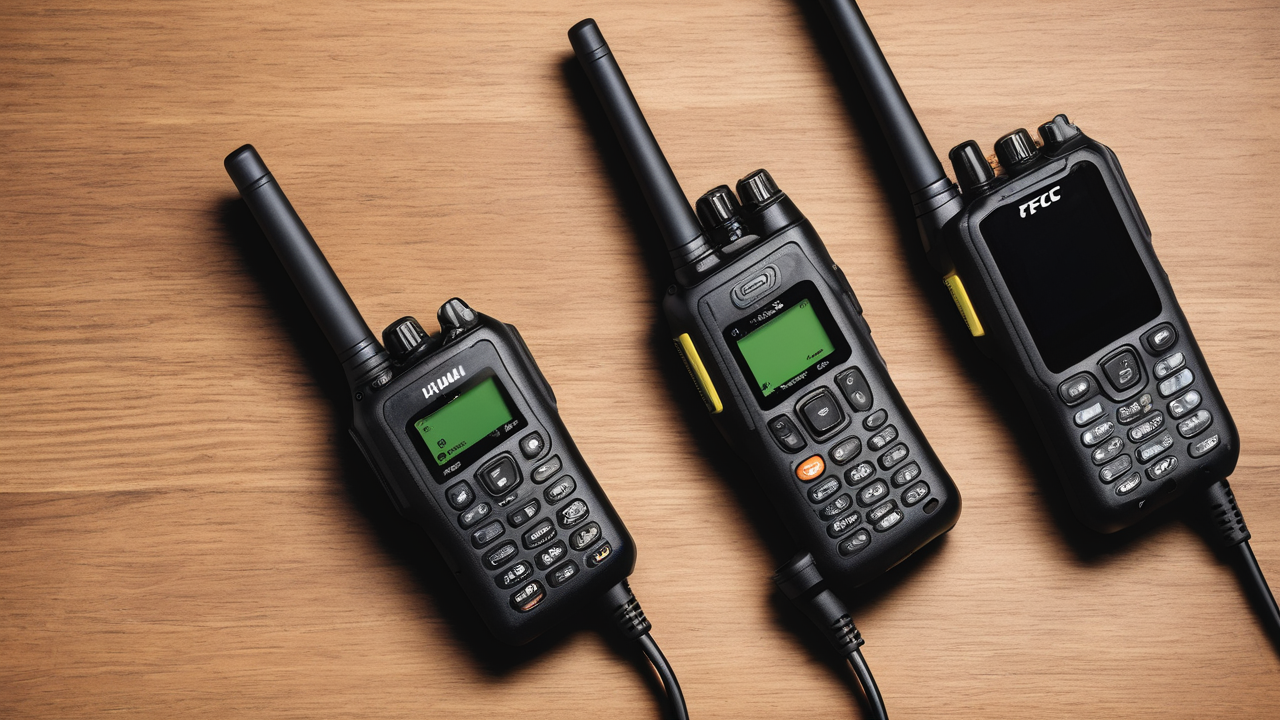Evaluating the Best Long Range Walkie Talkies for Hobbyists and Professionals
Understanding the Technical Specifications
When shopping for long range walkie talkies, it's crucial to grasp key specs. Frequency bands matter. UHF works well in buildings, while VHF is better for open areas. Power output affects range. Higher wattage usually means longer range. But more power drains batteries faster. Channel count is important too. More channels offer more privacy and less interference. Look for radios with CTCSS and DCS codes. These features help block unwanted chatter. Also, check for weather alerts and emergency features. They can be lifesavers in critical situations.

How Long Range Does 'Long Range' Really Mean?
'Long range' is a tricky term in walkie talkie marketing. Manufacturers often claim extreme ranges like 30 miles. But real-world performance rarely matches these claims. Terrain, obstacles, and weather all affect range. In open areas with no obstructions, you might get close to claimed ranges. But in cities or forests, expect much less. A good rule of thumb: divide the claimed range by three for a realistic estimate. High-end models might reach 5-10 miles in ideal conditions. But in typical use, 1-3 miles is more common. Always test range in your specific environment before relying on it.
Durability and Reliability in Diverse Environments
Top long range walkie talkies are built to withstand tough conditions. Look for models with high IP ratings. IP67 or IP68 means they're dust-proof and water-resistant. Some can even float. Shock-resistant designs protect against drops. Robust materials like reinforced plastics or rubber armor add durability. Consider temperature ranges too. Quality radios work in extreme heat and cold. For outdoor use, choose radios with good grip even when wet. Night operations? Look for backlit displays and glow-in-the-dark buttons. Reliable performance in all conditions is key for professional and serious hobby use.
Expert Reviews of Top Long Range Walkie Talkies
Highlighting the Features That Matter
Experts focus on features that truly enhance communication. Clear audio is paramount. Look for radios with noise-canceling tech. Voice activation (VOX) allows hands-free use. This is great for team sports or work sites. Scan functions help find active channels quickly. Group call features let you talk to specific teams. Some high-end models offer Bluetooth connectivity. This allows use with wireless headsets. GPS capabilities in some units can be lifesaving. They help locate team members or mark important spots. Battery life is crucial. The best models offer 12-24 hours of use. Rechargeable batteries with desktop chargers are convenient for daily use.

Testing the Boundaries: Range and Battery Life
Expert testers push radios to their limits. They conduct range tests in various settings. Open fields, urban areas, and dense forests are common test grounds. They measure both maximum range and reliable range. Reliable range is where clear communication is consistent. Battery life tests involve continuous use and standby time. The best radios balance power and efficiency. Some offer power-saving modes to extend battery life. Testers also check how quickly batteries charge. Fast charging is a big plus for professional users. Real-world tests often reveal strengths and weaknesses not seen in specs alone.
Consumer Protection: Regulations and Standards in the US
In the US, the FCC regulates two-way radios. Most consumer walkie talkies use FRS (Family Radio Service) or GMRS (General Mobile Radio Service) bands. FRS radios are license-free but have power limits. GMRS allows higher power but requires a license. It's important to buy radios that comply with FCC rules. Look for FCC certification on the product. Some features, like removable antennas, may not be allowed on FRS radios. GMRS radios offer more range and power. But users must be 18+ and pay for a license. Always check local laws too. Some areas have restrictions on radio use. Staying compliant ensures legal and safe operation of your long range walkie talkies.
Strategic Buying Tips for Long Range Walkie Talkies
Identifying Your Specific Needs
Before buying, assess your unique requirements. Consider where you'll use the radios most. Urban areas need different features than wilderness use. Think about group size. Large teams may need more channels. Evaluate your tech comfort level. Simple radios work for basic needs. Advanced users might want programmable units. Consider noise levels in your environment. Loud workplaces need radios with strong audio output. Privacy needs? Look for encryption features. Weather resistance matters for outdoor use. Battery life is crucial for long trips or workdays. Make a list of must-have features. This helps narrow down your choices and avoid overspending on unnecessary extras.

Comparing Price Points and Brands
Long range walkie talkies vary widely in price. Budget models start around $30 per pair. High-end professional units can cost $500 or more each. Mid-range options ($100-$300 per pair) often offer the best value. Popular brands include Motorola, Midland, and Cobra. Each has strengths in different areas. Motorola is known for durability and clear audio. Midland offers great weather alert features. Cobra excels in user-friendly designs. Compare warranty terms too. Some brands offer better customer support. Read user reviews for real-world experiences. But be wary of extreme praise or criticism. Look for patterns in reviews to spot consistent pros and cons.
Long-Term Investment vs. Short-Term Use: What to Consider
Decide if you need a long-term investment or a short-term solution. For occasional use, budget-friendly options may suffice. But for regular or professional use, investing in quality pays off. High-end radios last longer and perform better. They often have better resale value too. Consider future needs. Will your usage increase? Might you need more advanced features later? Modular systems allow upgrades over time. This can be cost-effective in the long run. Also, think about accessories. Quality headsets or car chargers can enhance usability. Factor these costs into your budget. Remember, cheap radios might need frequent replacement. This can cost more over time than a single, quality purchase. Balance immediate budget constraints with long-term value for the best decision.


